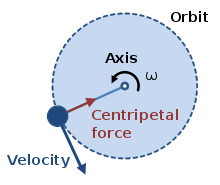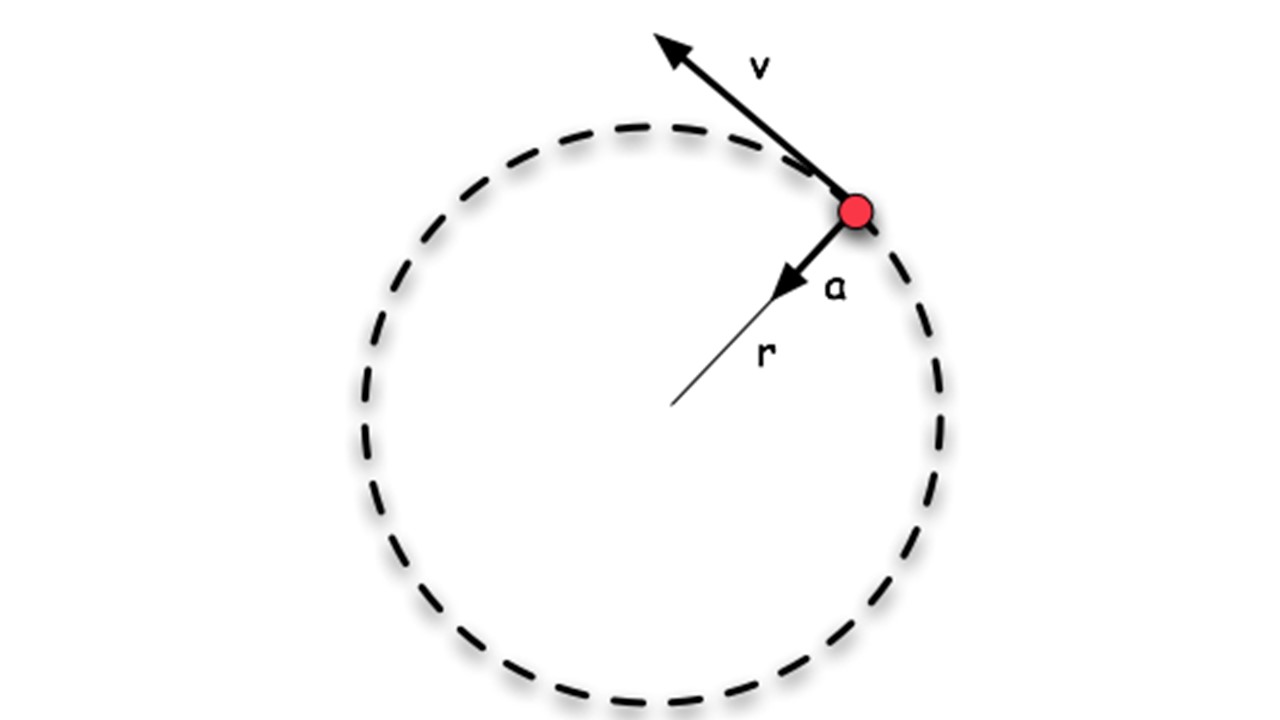Circular Motion


Circular motion is defined as a movement of an object along the circumference of a circle or rotation along a circular path. It can be uniform, with constant angular rate of rotation and constant speed, or non-uniform with a changing rate of rotation. Examples of circular motion include artificial satellites orbiting the Earth at a constant height, a ceiling fan's blades rotating around a hub, a stone which is tied to a sling and is being swung in circles, a circular roller coaster etc.

In relation to Newton's First law, an object will travel at a constant speed in a straight line unless a force act on it. In circular motion, the force causing the object to travel in a circle is continually pointing towards the center of the circular path, this force is called Centripetal force (Fc) or otherwise called center-seeking force. The centripetal force and velocity vectors are perpendicular.

Remember the basic equation of force F = ma. In circular motion, the magnitude of the centripetal force on an object of mass m moving at tangential speed v along a path with radius of curvature r is;
Replacing v in Fc = (mv2)/r
with (2πr) / T should result in the formula:
Frequency denotes the number of rotations completed by the object per second. The units are 1/s or s-1 or Hertz (Hz). Rotational frequency is also frequently expressed in revolutions per minute (rpm), this is not an SI unit but is common among tools and equipment. 1 rpm = Hz * 60.
We can express T as T = 1/f and therefore f as f = 1/T
The centripetal acceleration is influenced only by the speed and radius of the circular motion. Mass does not play a role in the centripetal acceleration, instead, mass influences the centripetal force. Just as the mass of a falling object does not affect the acceleration of gravity caused by Earth.
All the factors listed in the equation (mass, velocity, and radius) will influence the centripetal force Fc.
When a car is turning around a corner, the centripetal force is equal to the frictional force acting on the tires. Remember from Unit 2 that Friction can me calculated using the formula Ff = μFN.
Therefore, when Fc = Ff,
The formula above denotes the maximum velocity than an object can move and remain on the tracks without skidding.
While a roller coaster car is moving on a circular track, at the top, the centripetal force is exerted by two forces working in the same direction, the track on the car, which corresponds to the normal force FN and gravity (Fg). Both forces are pulling the car towards the center of the circle.
Remember centripetal force can be calculated as Fc = (mv2)/r. The lowest speed that a roller coaster car can go around the track should be the speed that creates a centripetal force equal to gravity, i.e. Fc = Fg.